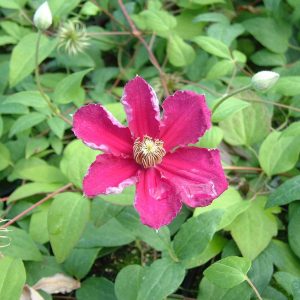Description
Bergenia are often grown as ground cover they have large, thick leaves that often turn partly red in Winter which is good to add a bit of colour to your Winter borders. They produce small clusters of flowers in Spring on leafless stems that appear above the foliage. They are low maintenance plants that are comfortable in almost any position, the only thing they can’t cope with is waterlogged soils.
Key Facts
- Common Name(s):Elephant’s Ears ‘Apple Blossom’
- Hardiness:Fully hardy through most of the UK
- How big will I get? Bergenia ‘Apple Blossom’ can grow to a height of 0.5m and a spread of 1m.
- Did You Know That:Many Bergenia are able to survive in a huge range of temperatures from -30 to 45 degrees Celsius?
Plant Calendar
A rough guide to how this plant will change through the year.
| Jan | Feb | Mar | Apr | May | June | July | Aug | Sept | Oct | Nov | Dec | |
| Flowering Time |  
|  
|  
| |||||||||
| Foliage Colour |  |
 |
  |
  |
  |
 |
 |
 |
 |
 |
 |
 |
| J | F | M | A | M | J | J | A | S | O | N | D |
 
|  
|  
| |||||||||
 |
 |
  |
  |
  |
 |
 |
 |
 |
 |
 |
 |
Care Guide

Soil Requirements
Bergenia ‘Apple Blossom’ prefers moist but well-draining soil. This plant can grow in soil with a wide range of pH levels, it is not picky about the pH level of the soil.

Best Position
Bergenia ‘Apple Blossom’ can handle either an exposed or a sheltered position and is a very versatile plant that can cope with full shade, partial shade, or full sun.

Maintenance
Bergenia ‘Apple Blossom’ is fairly low maintenance and doesn’t require any pruning. Remove any dead or damaged leaves in early Spring to tidy the plant up but this is simply for the plant’s aesthetic and is not mandatory.

Pest, Diseases and Wildlife
Bergenia ‘Apple Blossom’ can have problems with slugs, snails and caterpillars, it can be vulnerable to certain diseases such as leaf spot. It is also known to attract bees. It is toxic to dogs.





